Naha Waterfront 那覇市海浜・波の上
|
Title   • File Name • File Name   • Date • Date   • Position • Position   |
|

Naminoue Beach in central Naha is convenient for a quick swim or sunbathing. 波の上ビーチ
|
|
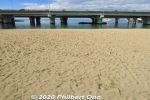
Naminoue Beach in central Okinawa. A local favorite and convenient for Naha locals in summer.
|
|
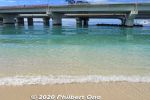
Although this big bridge is right in front, most people don't seem to mind it.
|
|
|

Naminoue beach, Naha
|
|
|
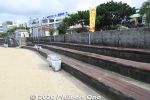
Bleachers at Naminoue Beach.
|
|
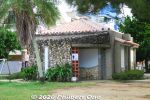
Okinawan-style restrooms at Naminoue Beach.
|
|

Map of the beaches in Naminoue area.
|
|

Naminoue Beach Park.
|
|
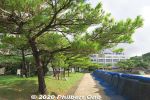
Naminoue Beach Park.
|
|

Naminoue Beach Park.
|
|
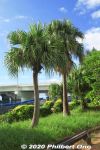
Naminoue Beach Park.
|
|
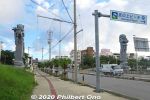
Near Naminoue Beach is this pair of Ryuchu dragon pillars on Wakasa-naka-dori road. 龍柱
|
|
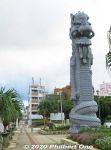
The Ryuchu dragon pillars are Naha-Fuzhou Friendship City Exchange Monuments.
|
|

Ryuchu dragon pillar in Naha, Okinawa.
|
|
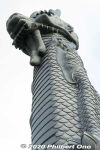
Ryuchu dragon pillar in Naha, Okinawa.
|
|
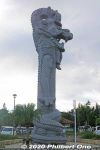
Side view of Ryuchu dragon pillar in Naha, Okinawa.
|
|
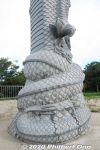
Foot of Ryuchu dragon pillar in Naha, Okinawa.
|
|
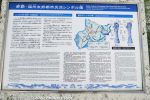
About the Naha-Fuzhou Friendship City Exchange Monuments (Ryuchu dragon pillars) in Naha, Okinawa.
|
|

Anatomy of Ryuchu dragon pillars.
|
|
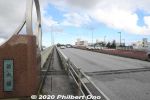
Tomari Ohashi Bridge goes over Tomari Port. f泊大橋
|
|

Tomari Ohashi Bridge also has a pedestrian sidewalk. 泊大橋
|
|
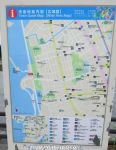
Map of Naminoue and Tomari areas.
|
|
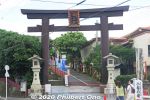
Naminoue Shrine torii. 波上宮
|
|
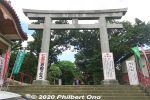
Naminoue Shrine torii.
|
|
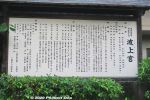
About Naminoue Shrine.
|
|

About Naminoue Shrine in English.
|
|
|
|
|
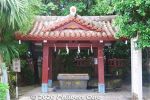
Wash basin at Naminoue Shrine.
|
|
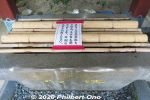
Wash basin closed as a Covid safety measure.
|
|

Naminoue Shrine's main hall. 波上宮
|
|
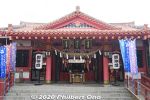
Near Naha's beach, Naminoue Shrine (波上宮). Major Shinto shrine in Naha. Looks very Okinawan. http://naminouegu.jp/english.html
|
|
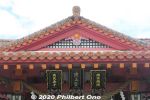
Naminoue Shrine roof.
|
|
|
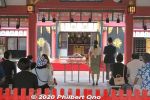
Inside Naminoue Shrine's Haiden, a ceremony taking place.
|
|
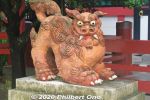
Seesaa at Naminoue Shrine.
|
|
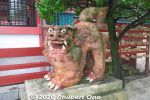
Seesaa at Naminoue Shrine.
|
|
|
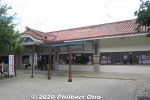
Naminoue Shrine office where you can buy charms or request prayer ceremonies.
|
|
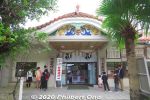
Naminoue Shrine office.
|
|
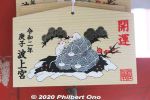
Naminoue Shrine's ema prayer tablet. (For the Year of the Mouse in 2020.)
|
|
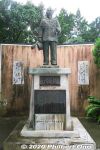
Statue of ?? at Naminoue Shrine.
|
|
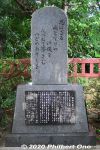
Poem by Emperor Showa at Naminoue Shrine.
|
|
|

Red hibiscus
|
|
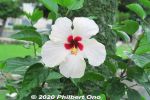
White and red hibiscus
|
|
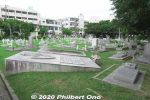
Near Tomari Port is the Tomari International Cemetery (泊外人墓地). First built in the early 19th century. Destroyed during WWII and restored in 1955. Numerous foreigners are buried here. 外国人墓地
|
|
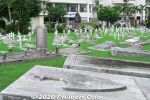
The Commodore Perry Landing Monument is also in the Tomari International Cemetery, seen here toward the left.
|
|
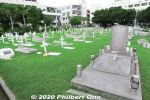
William Board, a sailor from Commodore Perry's crew, is also buried here after he was caught assaulting a local female and was stoned by villagers in 1854. He was drunk and fell into the water and drowned.This occurred while Perry went to Uraga. He had left a few crew in Naha, to be picked up on his return trip. A trial was held for the men who stoned Board. They were punished by being exiled to remote islands including Yaeyama. There's a small gravestone for Board in the cemetery.
|
|

Commodore Perry Landing Monument is in the distance. The cemetery has locked gates so we can't enter it. Not really a tourist attraction, but it can be clearly viewed from outside the low fence.
|
|

Perry Monument marking the place where he landed on June 6, 1853. The monument is within the Foreigners' Cemetery in Naha, Okinawa.
|
|
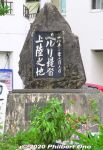
On Naha's waterfront, Commodore Perry Landing Monument. Perry first landed in Naha in May 1853 and was finally able to visit Shuri Castle on June 6, 1853 after insisting on it. Meanwhile, his crew explored the island and saw interesting things.
|
|
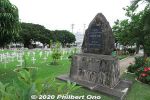
About a month later, he and his Black Ships shocked mainland Japan off Uraga in Kanagawa Prefecture. In the following year, after the U.S.-Japan Treaty of Peace and Amity was signed in Yokohama, Perry visited Naha again and signed the Ryukyu-U.S. Treaty of Amity on July 11, 1854. ペリー提督上陸記念碑
|
|
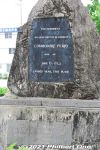
Back of Perry Monument: This monument has been erected in honor of COMMODORE PERRY who on June 6, 1853 landed near this place.The lower plaque is inscribed with Perry's quote when he visited Shuri Castle:
PROSPERITY TO THE LEW CHEWANS, AND
MAY THEY AND THE AMERICANS ALWAYS BE
FRIENDS.
COMMODORE PERRY AT A RECEPTION IN
HIS HONOR (THE ROYAL GUEST
HOUSE) SHURI, OKINAWA, JUNE 6, 1853
|
|

Older photo of the monument when it looked more new. The lower plaque wasn't faded yet."Lew Chew" (Ru-chu ルーチュー), as spelled by Perry, is what the Ryukyu Kingdom called itself. There's also "Uchina" (ウチナー) which referred to the main island, but today, "uchina" usually refers to the entire prefecture of Okinawa.
|
|

Older photo of the monument when it looked more new.
|
|

Hibiscus
|
|
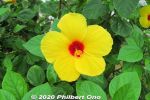
Yellow hibiscus
|
|
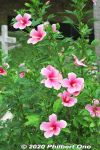
Pink hibiscus at the cemetery.
|
|
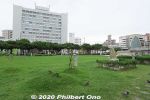
Tomarin Park next to Tomari Port. 泊緑地
|
|
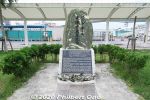
Captain Basil Hall monument in Tomarin Park, Naha, Okinawa.
|
|

About Captain Basil Hall.
|
|
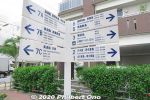
SIgns at Tomari Port.
|
|
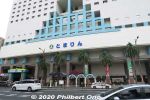
Tomari Port or Tomarin Port terminal building, Naha, Okinawa.
|
|
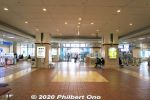
Inside Tomarin (Tomari Port building). Boat/ferry ticket windows.
|
|
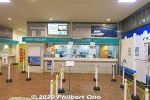
At Tomari Port, ticket window for Zamami island.
|
|
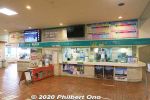
At Tomari Port, ticket window for Kumejima island.
|
|
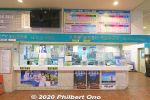
At Tomari Port, ticket window for Kumejima island.
|
|
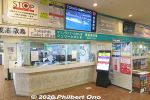
At Tomari Port, ticket office for Tokashiki island.
|
|
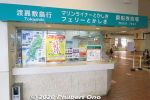
At Tomari Port, ticket office for Tokashiki island.
|
|
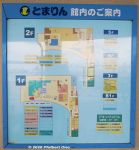
Floor map of Tomarin.
|
|

Today's boat schedule. Check this to make sure your boat has not been canceled due to the weather, etc.
|
|
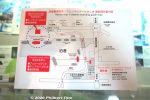
Map to the boat dock for Tokashiki island.
|
|
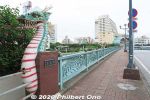
Dragon bridge across Tomari Port.
|
|

Dragon bridge across Tomari Port.
|
|
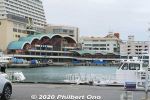
Tomari Port, Naha.
|
|
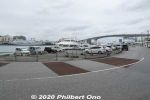
Boat dock at Tomari Port.
|
|
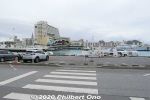
Boat dock at Tomari Port , Naha.
|
|
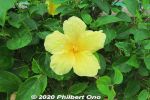
Pure yellow hibiscus.
|
|
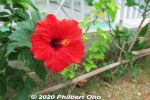
Red hibiscus. Lots of flowers in this area.
|
|
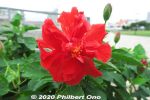
Red hibiscus, Naha.
|
|
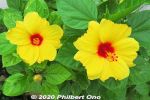
Yellow hibiscus
|
|
|
|